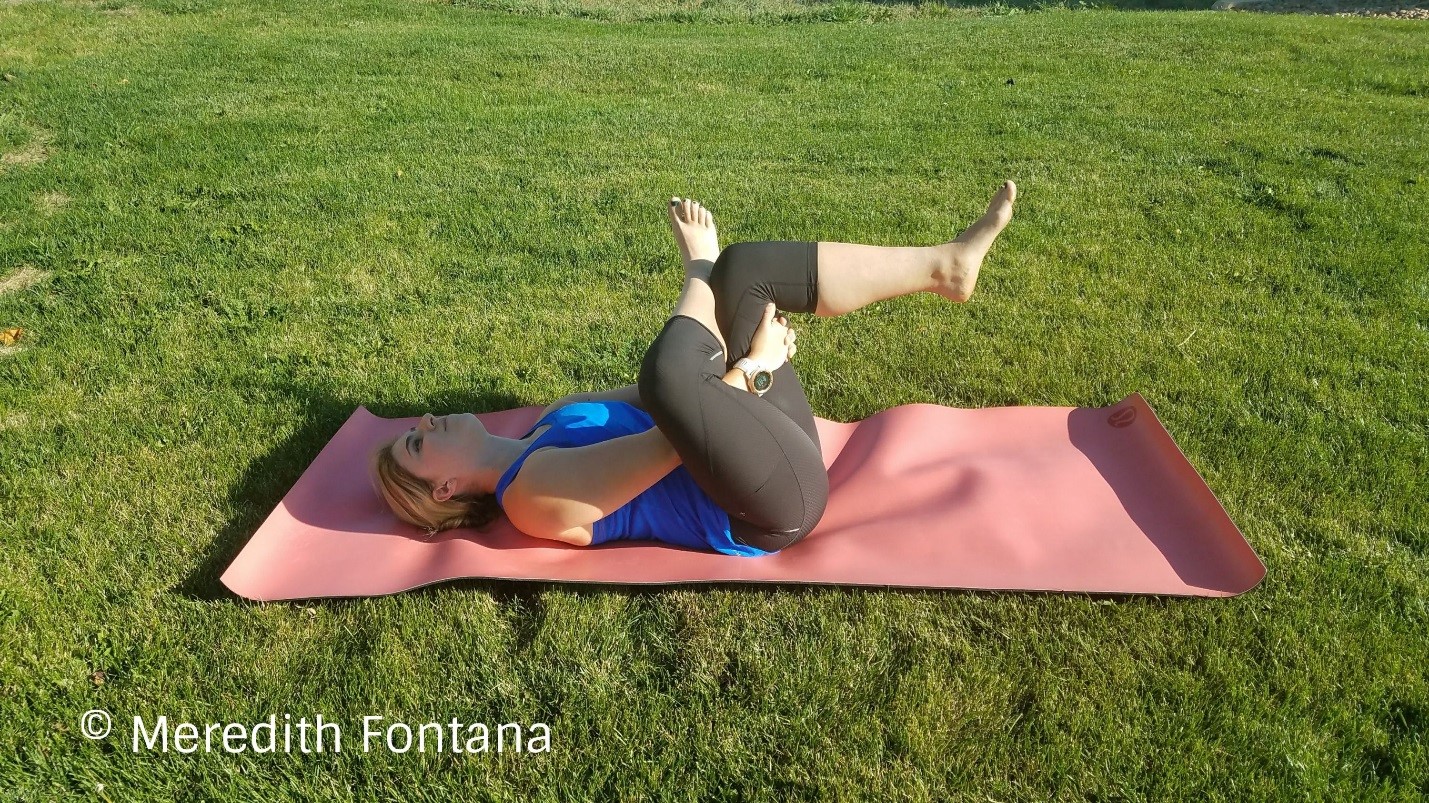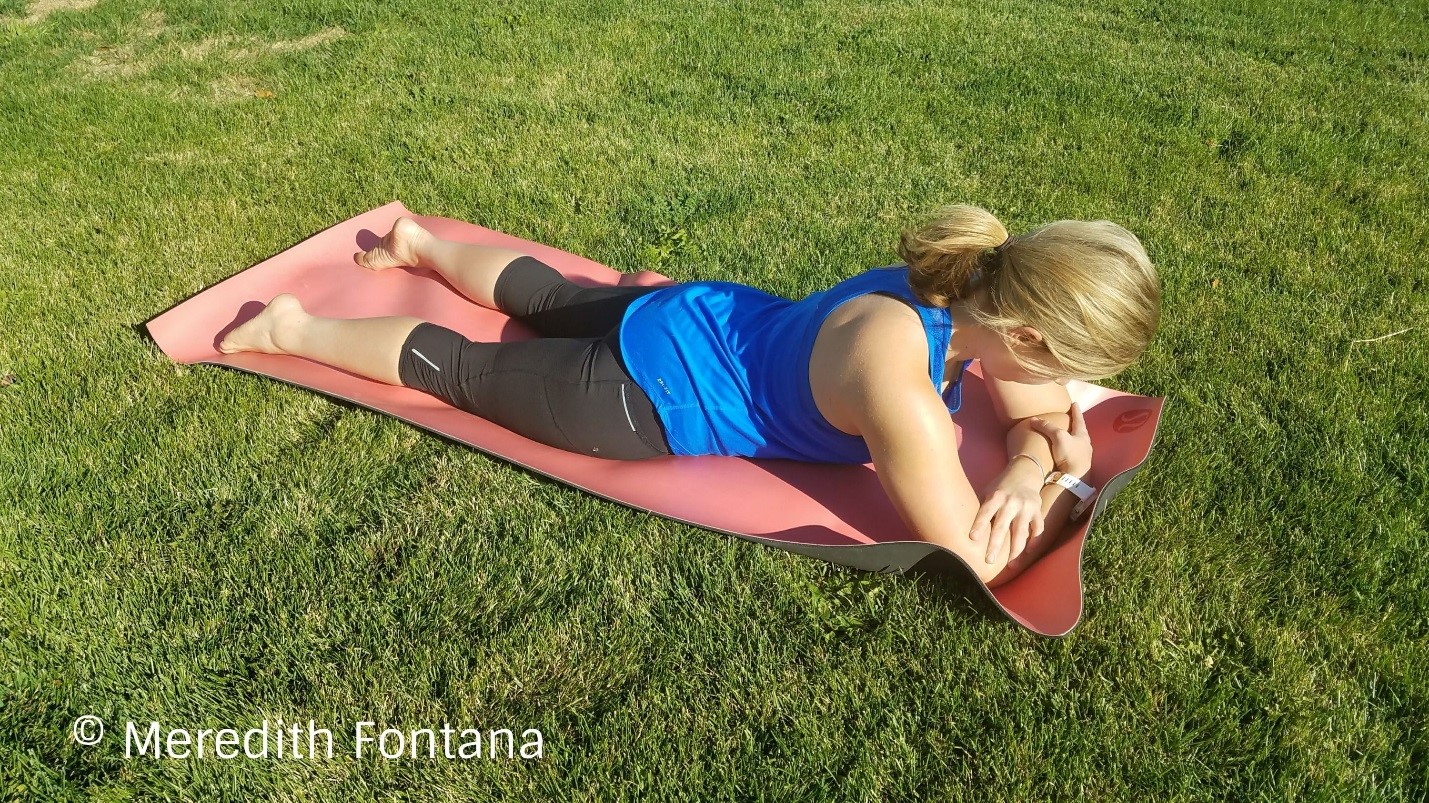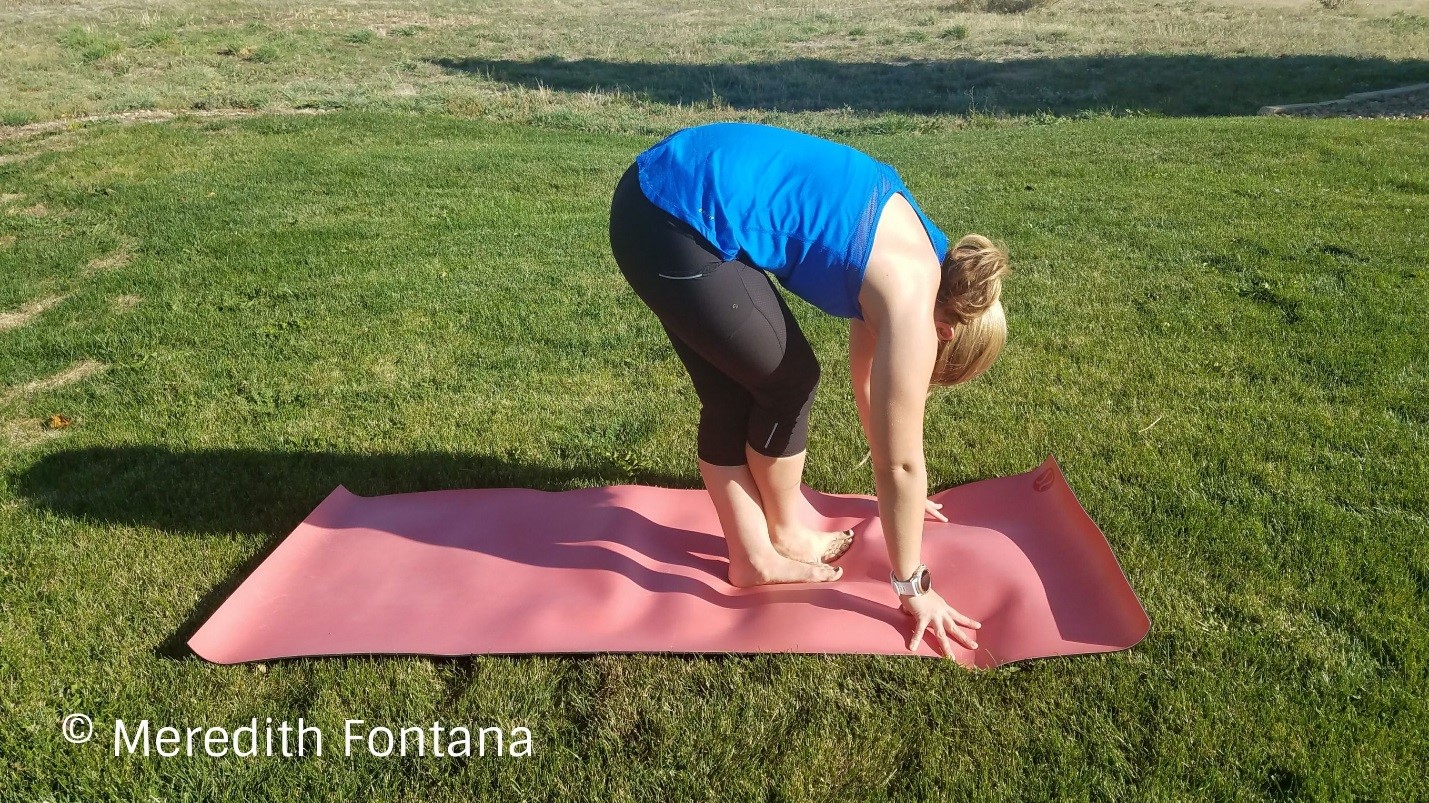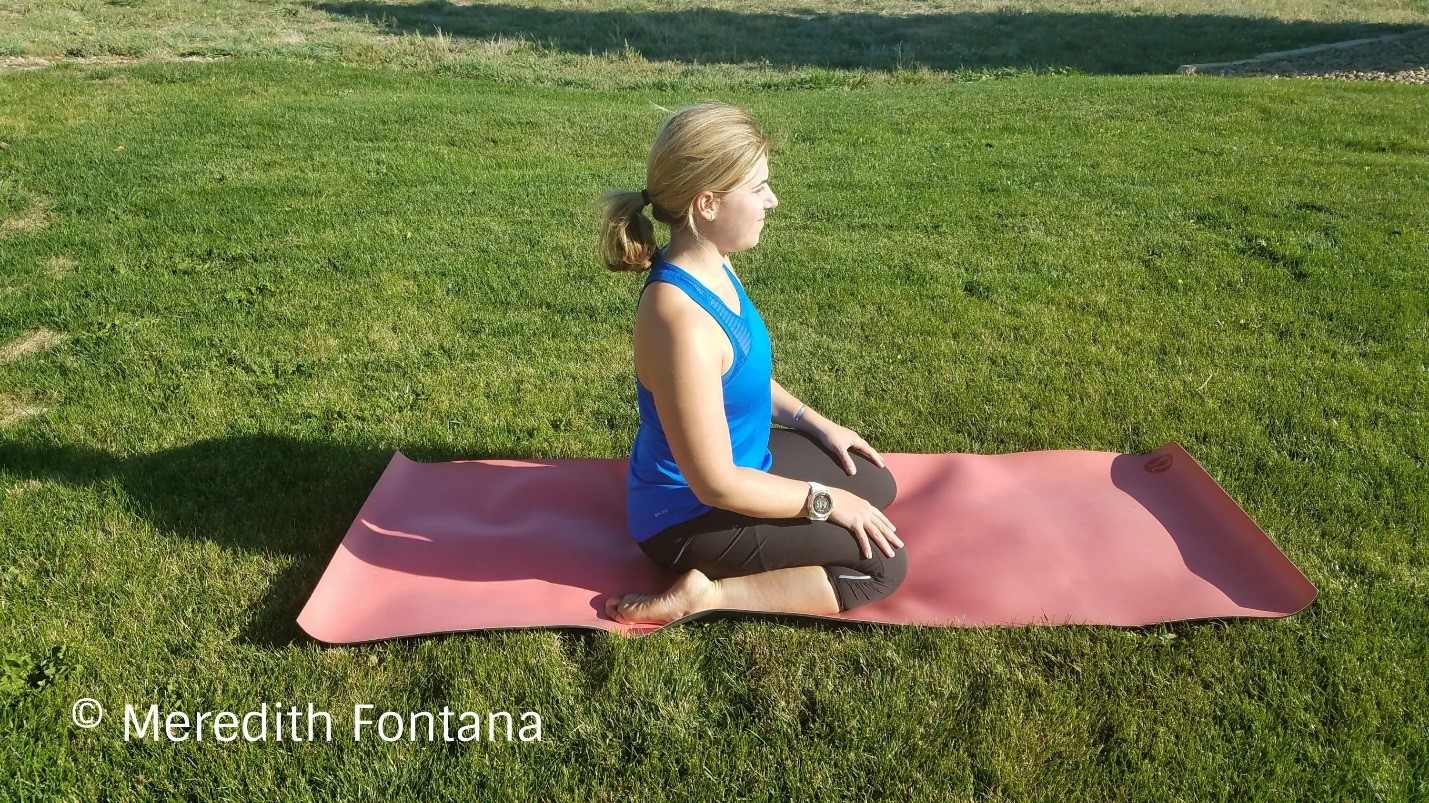Member Blog: Stretch your ride by complementing bicycling with yoga

Meet Meredith Fontana, MS, RYT 200!
Meredith is a proud member of Bicycle Colorado. She is also a former biologist and competitive cyclist turned yoga instructor and health coach. Meredith took some time to write up some tips for bicyclists to improve their ride by complimenting it with stretching. As a supporter of Bicycle Colorado, she is passionate about sharing the benefits of yoga for bicyclists.
What if I told you that there was something you could do for a few minutes every day that would make you feel even happier on your bicycle? What if I told you that it would reduce tension in your neck, melt away stiffness in your hips, stave off injuries, make your entire body stronger and help you recover faster? Would you try it?
You’ve probably heard about how great yoga is supposed to be for your health, and you’ve likely seen yoga classes and studios everywhere in Colorado, but have you actually tried it? If your answer is “no,” or “just a few times,” you might be missing out on one of the best ways to improve not just your health but your cycling ability, too.
Here are five simple stretches that I use after every ride to help my body recover and be ready for the next ride.
1) Supine Figure Four

Bicyclist benefits: One of the most common complaints that I hear among cyclists is tight hips. Supine figure four is an excellent hip opener that is accessible to even the stiffest of cyclists. Tight hips can cause all sorts of problems—especially low back pain—so focusing on this area is extremely important.
How to get into the pose:
- Lie on your back and walk your feet toward you so that your knees bend.
- Bring your right ankle on top of your left thigh.
- If you don’t feel much of a stretch along the outer hip, bring your hands behind your left hamstring and pull your left thigh toward your chest, lifting your left foot off of the ground.
- Pause for at least 3-5 breaths. Repeat on the other side.
2) IT Band Fold
Bicyclist benefits: You are probably already familiar with the IT band because it is a problematic area for cyclist and runners. The IT band is not a muscle but a long, fibrous band of connective that runs along the outer (lateral) thigh from the pelvis to the knee. The repetitive motion of the leg that cyclists perform causes the IT band to become susceptible to inflammation and overuse injuries such as IT band syndrome. The IT band fold is one of many methods that will keep your IT band healthy. This pose is also a two-in-one for cyclists because it also stretches tight hamstrings.
How to get into the pose:
- Begin by crossing your right foot over your left. Both feet should be firmly on the ground with the outer edges of your feet connecting.
- Fold over your legs and reach for the ground.
- If you can’t reach the ground, use a yoga block or any other supportive object (like a chair) to support you under your hands and help with balance.
- Pause at least 3-5 breaths.
- Stand back up, switch your feet by re-crossing your legs the opposite way and repeat.
3) Hero Pose
Bicyclist benefits: Hero pose is a deep stretch for the quadriceps, one of the biggest muscle groups used when pedaling. Tight and sore quads are a common problem among cyclists, and this pose will open them right back up if practiced regularly.
How to get into the pose:
- Begin by standing on your knees with your knees about hip width distance apart. Untuck your toes so that the top of your feet are in contact with the mat. Point your toes directly behind you.
- Move into the pose by lowering your hips toward your heels. Place your hands behind you and lower your hips as close as you can toward the ground so that you are sitting on top of your heels (or between your feet to deepen the pose).
- If you sit down completely on your heels or the mat, place a block or blanket under your hips to sit on for support.
- If you have ANY knee pain or a previous knee injury, come out of the pose, change the depth or skip it all together.
- Notes and options:
- If you can sit comfortably on the ground between your feet, place your hands behind you and begin to lean back. Eventually, you might be able to rest on your forearms or lie on your back.
4) Sphinx

Bicyclist benefits: Sphinx is a pose that gently compresses the lumbar vertebrae and sacrum, which—when done correctly—strengthens spinal muscles and promotes a healthy spine (as long as you have no injury or other limitation). The type of vertebral compression created in this pose (posterior compression of disks) counteracts the compression that occurs while you ride (anterior compression of disks). It also counteracts the rounding we do on our bikes by opening the frontline of the torso.
How to get into the pose:
- Lie on your belly, legs about hip width distance apart and the tops of your feet flat on the mat.
- Reach for opposite elbows with your hands and slide your elbows toward the top of your mat.
- Hold for up to 5 minutes.
- Do not do this pose if you have any pain in your lower back before or during this pose.
- Come out of this pose by lowering your chest to the ground and releasing your arms by your sides.
- Notes and options:
- Slide your elbows back toward your shoulders to deepen the compression. Eventually, elbows may stack directly under your shoulders.
- Bend your knees by pulling your heels toward your glutes or spread your legs wider to increase compression in the spine.
- Forearms can be parallel to the long edges of your mat, which will externally rotate the arms (not shown).
- Place a block underneath your forehead to allow your head to rest and take strain off of your neck and shoulders.
5) Bridge Pose

Bicyclist benefits: This pose opens the frontline of your body to counteract the rounding forward (flexion) that occurs during your ride and strengthens several key muscles (including the glutes, hamstrings and core muscles) that keep your spine healthy and less prone to cycling related injury.
How to get into the pose:
- Lying on your back, walk your feet toward your hips so your knees eventually stack over your ankles.
- Place your feet hips width distance apart.
- Lift your hips towards the sky by pressing into your feet. Think about not just using the glutes but the hamstrings as well by dragging your heels toward you on the mat without moving them.
- Pause and hold for 3-5 breaths.
- To come out of the pose, carefully lower your spine back down to the mat.
- Notes and options:
- Place a block under your sacrum and rest your back on the block for a few minutes to make this more restorative.
These stretches are a great start to improve your ride, but there are also many more. And I get it, yoga might be the last thing on your radar. It was the last thing on mine until a few years ago when I tried it for the first time. I’ve been a road cyclist for over 15 years now and—like most cyclists—I didn’t see the act of slowing down and allowing my body to recover as a priority. Recovery work as simple as stretching always seemed like the last thing I had time for, which I’m sure you can relate to.
I didn’t try yoga to become a better bicyclist, but the benefits I started to gain on my bike were hard to ignore. My mind and my body were becoming stronger and more resilient, and it brought even more joy to the experience of being on two wheels. Practicing yoga creates a physiological environment that supports optimal sports performance and overall well-being. From preventing injuries and improving recovery, to creating mental toughness and focus, the benefits of yoga are both numerous and powerful. You may likely also notice that they spill into your everyday life off the bike, too.
Like cycling, yoga also builds community. The community that surrounds yoga is why I became a teacher; the community of bicyclists is why I’m a proud member of Bicycle Colorado. No matter what type of bike you ride or your level of experience, you are part of a cycling community that is stronger in numbers and stronger because of important advocacy groups like Bicycle Colorado.
As a yoga teacher and a cyclist, my work is about helping people feel better, whether on the bike or off. Getting bicyclists to take care of themselves by slowing down is one of the hardest parts of my job, and often because cyclists are afraid to take the first step, which is why I have a few more tips for you to make the adjustment easy:
- Start small. Just a few minutes of yoga a day, or every few days, is enough to experience benefits.
- Start easy. Learn just a few beginner poses at a time. Don’t feel like you need to know every pose (or even any pose) in order to take a class.
- Find a local bike shop that has yoga classes, or find a studio that offers “yoga for cyclists” classes. These will usually be the most accessible classes for you, even as a beginner. You will also meet other friendly cyclists in your community!
- Try a beginner or a restorative yoga class at a gym or studio if you are new to yoga and can’t find a specific “yoga for cyclists” class.
- Find a teacher that has cycling experience and can understand your specific needs. Many teachers also offer one-on-one sessions where you can learn yoga at home and receive personal attention and focus on specific goals.
- If you can’t find a local teacher or studio you like, try an online subscription service where you can stream classes at home.
- Don’t worry about buying any gear other than a cheap yoga mat (or soft surface). Some studios even have mats to rent for a few bucks.
Finally, but most importantly, keep an open mind! It can be intimidating and uncomfortable to try something new when you feel like you have no idea what you are doing, but the benefits are so worth it.
If you are interested in learning more on this topic, follow your Meredith on Instagram @yoga4cyclists and get more useful tips for cyclists at meredithfontana.com.
Thank you, Meredith for sharing these valuable tips! If you are a current member and would like to connect and share, please send us an email at info@bicyclecolorado.org.
DISCLAIMER: Do not attempt any of these stretches if you feel any pain while doing so. Please consult your doctor if you do experience any pain.
No matter what type of bike you ride or your level of experience, you are part of a cycling community that is stronger in numbers and stronger because of important advocacy groups like Bicycle Colorado.
Leave A COMMENT
Our twitter feed is unavailable right now.










